To the newer fans among us, the announcement must have sounded like a journey into undiscovered country. The UFC’s new broadcast rights deal, as we learned last week, will bring it not only to Paramount+, but also to CBS in 2026.
CBS will be the third major network to carry live UFC events. (First was FOX, from 2011-2018, followed by ABC, which aired several UFC events per year as part of the deal with ESPN.)
But as those who’ve followed MMA since its infancy already know, CBS isn’t new to this racket. In fact, you could easily argue that no TV network has as varied and strange and deep a history with this sport as CBS does. You could even, without stretching the definition of the word too much, go so far as to call CBS a pioneer.
On May 31, 2008, it aired the first live MMA event in primetime American network TV history. That event was EliteXC: Primetime, headlined by Kimbo Slice vs. James “The Colossus” Thompson in a heavyweight main event.
To some at the time, it seemed borderline disrespectful to shine so much of the spotlight on a guy like Kimbo, who had garnered viral internet fame as a street brawler who could be seen battling in backyards and boat salvage yards on shaky footage posted to porn sites. He only had two pro MMA fights at the time, both under the EliteXC banner, and both against opponents who’d clearly been brought in to lose.
But former UFC champion Frank Shamrock was on the commentary team for CBS that night, and he knew going in that the TV executives had already made up their minds about who was best suited to lead the marketing charge for this new venture.
“Kimbo was the star, that was 100% clear,” Shamrock told Uncrowned. “I mean, he was the guy. People might have given them a hard time about it back then, but in a way I think they kind of foresaw the future and where things would go with streamers and influencers. Going with a guy who had that kind of YouTube interest that he had, that meant bankable numbers. I don’t think anybody else in the sport had that at the time.”
That first CBS card also had its share of established MMA fighters. Future UFC champ Robbie Lawler fought Scott Smith to a no-contest with the EliteXC middleweight title on the line in the co-main event. Women’s MMA star Gina Carano beat Kaitlin Young elsewhere on the televised card. A young Calvin Kattar suffered his first pro loss on the prelims.
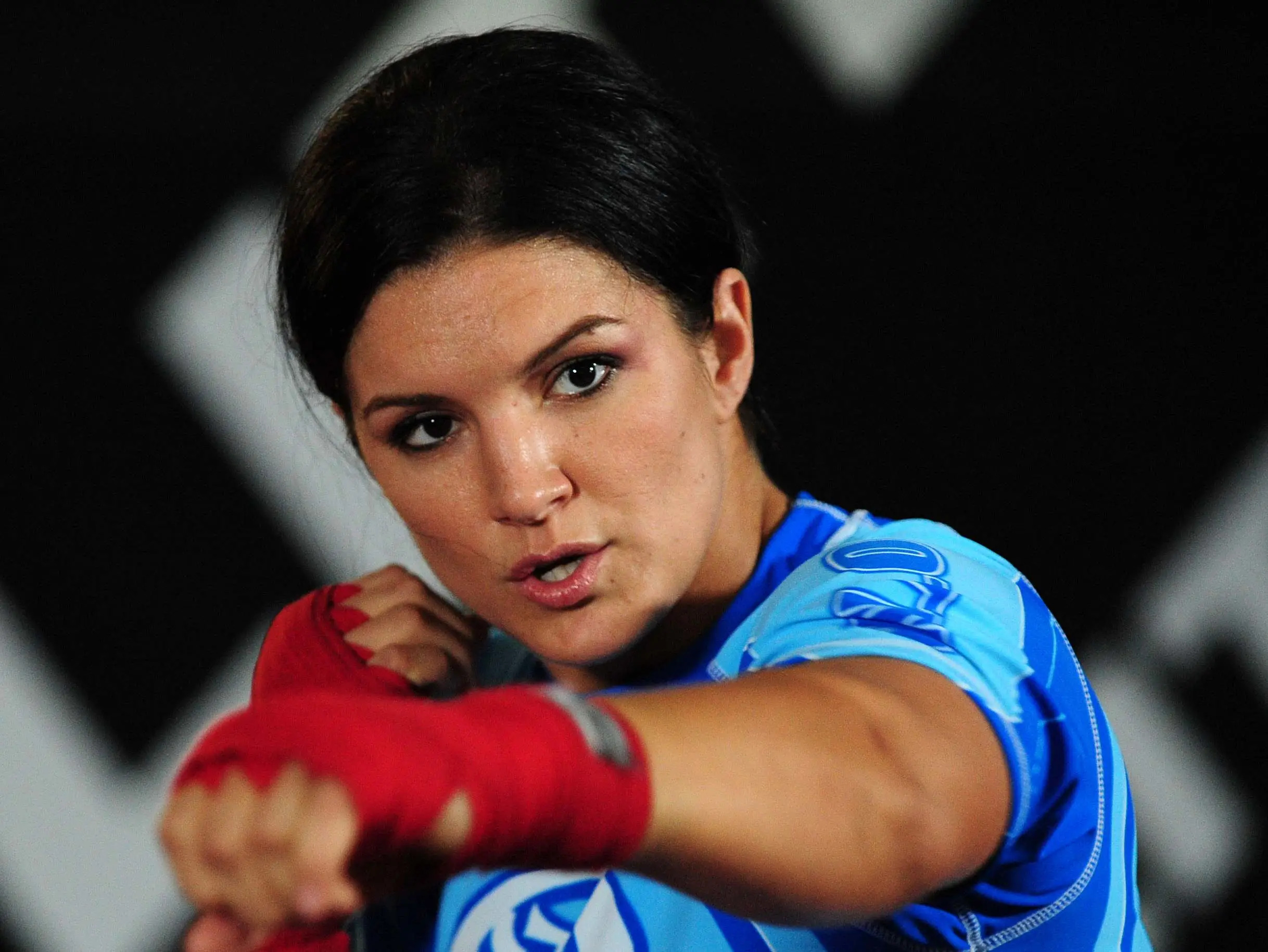
But to the CBS executives at that time, it was the Kimbo show. He’d captured a type of fame that still felt new and strange and tenuous. He was an internet celebrity, which was something that hadn’t even really existed as a concept five or 10 years earlier. That made him an oddity, but was it enough to bring in ratings?
The higher-ups at CBS, however, also had other concerns relating to the nature of MMA itself. The UFC had broken through with “The Ultimate Fighter” on Spike TV three years earlier, but most of America was still learning what to expect from mixed-rules fights inside a chain-link cage.
At the start of the broadcast, commentator Gus Johnson looked into the camera and proclaimed this “the dawn of an era in American sports.” The show’s opening also included a video package where Shamrock talked viewers through “MMA 101,” laying out the basics of the sport. This was deemed necessary, Shamrock said, because the days of MMA being branded as “human cockfighting” by critical politicians like John McCain were not so far in the past.
“The American public was still a little unsure about MMA, and I think the network knew that,” Shamrock said. “We felt like we had to try to educate them about what it was, or at least what it could be.”
But the late Gary Show, then known primarily as a boxing promoter, promised that his EliteXC brand would make American Idol-level stars out of these fighters by putting them on live primetime TV.
“They’ll be recognized at airports and Burger Kings,” Shaw said prior to the event
Rich Chou, a matchmaker who worked with EliteXC and later Strikeforce and Bellator, remembered there being concerns about how the blood and violence of MMA would play on live network TV. Those concerns only grew during the preliminary portion of the debut card, which aired via online stream on EliteXC’s website, but nowhere else.
“I think they were always nervous about MMA, and I'll give you an example that might help kind of characterize what the sentiment was and what was going on,” Chou said. “I believe it had to have been the first event, but there was a bloody fight on the prelims and we were getting ready to go live on CBS. I just recall people were freaking out. Like, ‘Can we change the mat before we go on CBS?’ I'm telling them no, but we got a crew out there doing their best to clean it up. It looked like a murder scene. Somebody got elbowed — and as we know, those create some of the worst cuts. So there's blood all over a section of the canvas, and there were just guys freaking out about heading onto CBS like that.
"They were seriously asking, ‘Can we change the whole canvas?’ I'm like, 'That's just not going to happen in the next 20 minutes.'”
If the TV execs were squeamish about blood, the main event didn’t help. Thompson, a chiseled mountain of a man who was by then a journeyman heavyweight who’d mostly made his name in Japan’s PRIDE FC, showed up on fight week with a bad case of cauliflower ear. After two somewhat sloppy and increasingly exhausted rounds, Slice’s fist finally caught that ear flush early on in the third.
“That ear popped!” Shamrock proclaimed on the broadcast. “That ear popped!”
It sure did. The blood flowed and Slice’s punches came in wild bursts. With Thompson looking wobbly and a little mangled, referee Dan Miragliotta stepped in to end it — much to Thompson’s dismay.
The morning-after reaction to all this was mixed. Many longtime MMA fans felt like EliteXC hadn’t exactly put the sport’s best foot forward with that main event. UFC President Dana White heaped scorn on both Slice and his competitors at EliteXC.
“I’ve been busting my ass for the last 10 years in this sport, and there’s a lot of great athletes in this sport ... and last night was a f***ing joke,” White said in the aftermath of the event. “Did it set us back? I don’t know. I did 'SportsCenter' today, where some guy’s saying this stuff shouldn’t even be on television. I agree. What happened last night should not be on f***ing television, especially network television. But you can’t say that about the real fighters in this sport.”
Still, CBS executives were relatively pleased. The event had averaged nearly 5 million viewers, shattering all records for live MMA viewership in North America at the time. That record would stand until the UFC’s first fight on FOX in November 2011, which pitted Junior dos Santos and Cain Velasquez against one another for the UFC heavyweight title.
“The ratings were tremendous,” said Chou. “The CBS people, they were all very happy with it. Now, they may have been nervous and anxious about the exploding ear thing, and maybe they didn’t fully understand the product, but they were happy with the results from a ratings standpoint.
"But the next event didn’t feature Kimbo, and it didn’t do as good. After that, they just wanted Kimbo.”
Slice would return in October of that year. The original plan was for him to face former UFC fighter and WWE wrestler Ken Shamrock, the brother of Frank who was 44 years old but still well-known at the time. But the day of the event, chaos reigned.
Ken Shamrock suffered a cut over his eye, reportedly while doing drills with one of his coaches that morning. Since he had very recently argued over pay with the promoter, there was plenty of speculation about the legitimacy of the laceration, but in the end he was pulled from the fight and replaced by Seth Petruzelli, an unknown from the undercard. No one could have known it then, but that right there was the beginning of the end for EliteXC.
Petruzelli, a part-time fighter who also owned and operated a couple Smoothie King franchises in Florida, was giving up nearly 30 pounds in weight against Slice. But a short right hand in the opening seconds of the bout negated that advantage, sending Slice falling face-first to the canvas. A couple follow-up strikes sealed the deal, and in just 14 seconds all the hype had officially drained out of EliteXC’s top ratings draw.
The promotion would ultimately hold just one more event — featuring future MMA stars like Lawler, Nick Diaz and Eddie Alvarez — but Slice’s upset loss meant the end of EliteXC on CBS. MMA’s first wild ride on network TV had lasted less than a year.
You might think it would be enough to make CBS swear off the sport for good. But just one year later, CBS announced a deal with Strikeforce, the California promotion that had grown from a regional show to a genuine UFC competitor. The plan was for most Strikeforce events to air on Showtime, the premium cable arm of Paramount’s media empire. But select events would air on CBS, beginning in November 2009 with an event headlined by former PRIDE champion Fedor Emelianenko taking on former EliteXC fighter Brett Rogers.
It marked the return of MMA to live network television. It did reasonably well on CBS, averaging around 4 million viewers with a peak of 5.46 million. For a short time, it seemed like MMA might have a future on the network after all.
That changed the following spring. After several successful events on Showtime, Strikeforce returned to CBS for an event in Nashville, headlined by Jake Shields and Dan Henderson. The fight itself was something of a dud; Shields dominated Henderson on the mat and won a unanimous decision victory.
But during Shields’ post-fight interview, former opponent Jason “Mayhem” Miller, who had fought and won on the prelims of the card, slipped into the cage to demand a rematch with Shields. He wasn’t even particularly aggressive about the request — “Where’s my rematch, buddy?” was the line he used when interrupting Shields’ interview — but it didn’t matter. Shields and his entourage immediately attacked Miller, resulting in an ugly post-fight brawl on live network TV.
“This is ridiculous,” said longtime commentator Mauro Ranallo. “My God.”
“Sometimes these things happen in MMA,” added CBS’ Johnson, which did not exactly endear him to fight fans going forward.
The fracas proved to be something of a dealbreaker for CBS. The sight of Shields’ team jumping Miller on live TV — and in front of a viewing audience that was about half the size Kimbo Slice had brought in two years earlier — seemed to convince network executives that this kind of thing was better off over on Showtime, where it could bolster a late-night TV lineup that included such films as “Sexquestrian” and “Sex-Life Crisis.”
“We knew it wasn't good,” said Chou, who worked as Strikeforce’s primary matchmaker at the time. “We all knew that. I recall we went back to (Strikeforce founder and CEO) Scott (Coker)’s suite and were sitting around and we all knew it was bad. Then he started getting calls and texts from people like Ken Hershman, who was running Showtime at the time, to Les Moonves, who was running CBS. When one of the most powerful people in TV is calling you at a time like that, you know it’s probably bad.”
The way Frank Shamrock remembers it, the “Nashville brawl,” as it soon became known, was a real momentum-killer for MMA on CBS.
“It just stopped,” he said. “Everyone was into it up until then. But there were still concerns about MMA. It had this street thuggery image, and that was the concern of the executives. So when that happened, yeah, it played right into their worries and really set us back.”
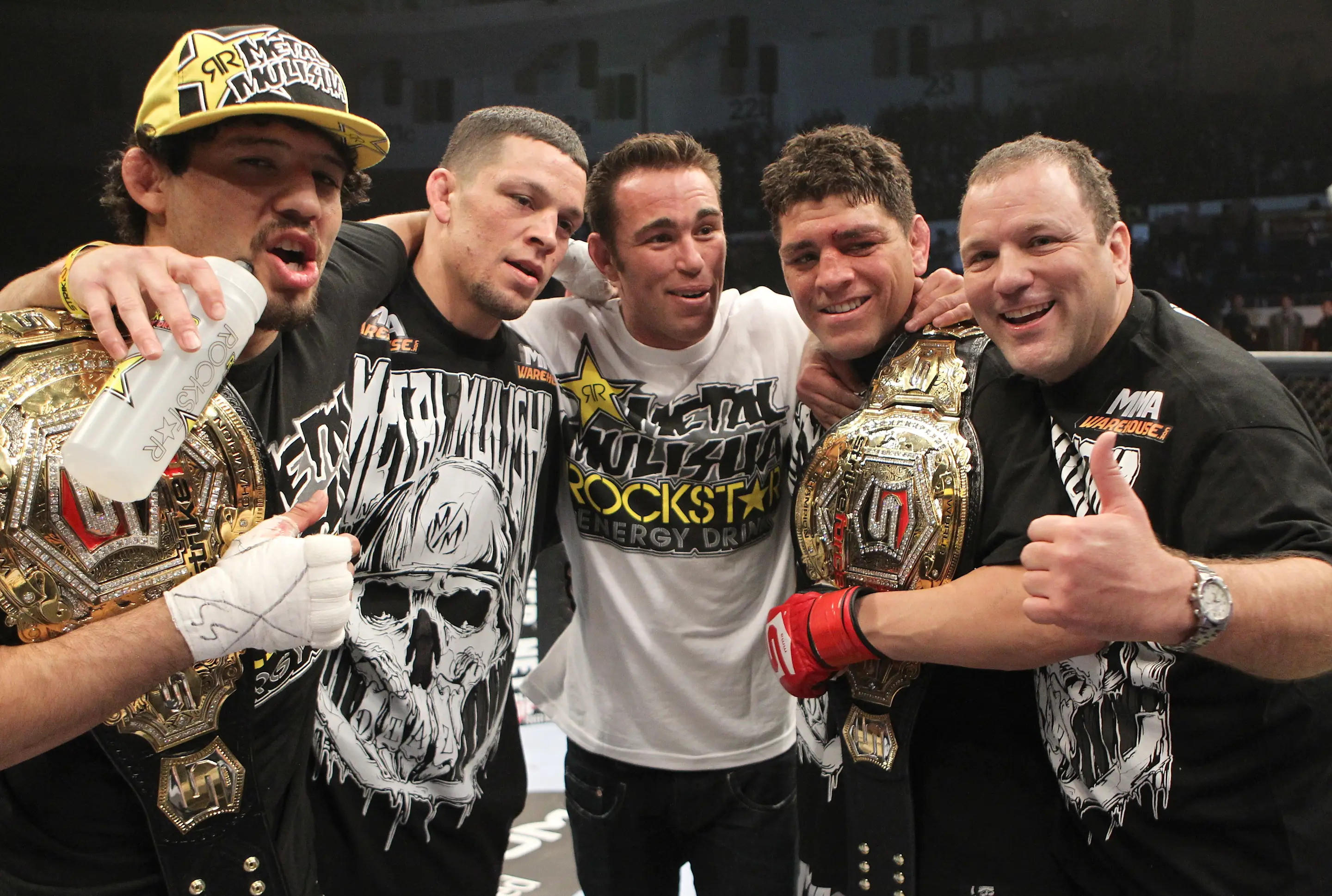
Of course, it was also nearly 15 years ago, when attitudes toward MMA were very different. It was also just a different time in American life, when it took a lot less to shock a live TV audience. Just as a society, we’ve all seen some things since then. We are not as easily appalled by man’s inhumanity to man, or by violent chaos on a live broadcast.
“If that happened today, I think it'd be totally different,” Frank Shamrock said. “There'd be fines given out and people would get in trouble, but it wouldn't be what it was then. But it's like any new show. You’re still proving it until you get to big numbers and people are regular viewers. So I think we came from a rocky place after Kimbo got knocked out, and that brawl put us on the line.”
CBS didn’t entirely lose faith in MMA, though. In 2023, the network aired a Bellator event that saw Ryan Bader knock out an aged version of Emelianenko. The event averaged just over 1 million viewers, but at least it went off without any major disasters.
“Maybe that exorcised some of the demons,” Chou said. “And now things can move on with the UFC.”
The current version of CBS, it must be said, is very different from those past iterations — different executives and also a new identity, following Skydance’s $8 billion acquisition of Paramount of CBS earlier this year. Now the company is ready to get back in the MMA business in a big way, forking over an average of $1.1 billion a year for broadcast rights to the UFC.
Will it lead to better results this time around? Has the curse, whether or not it ever truly existed, finally been lifted? That remains to be seen. But with this new deal, CBS is betting big on the UFC — and giving MMA one more chance.


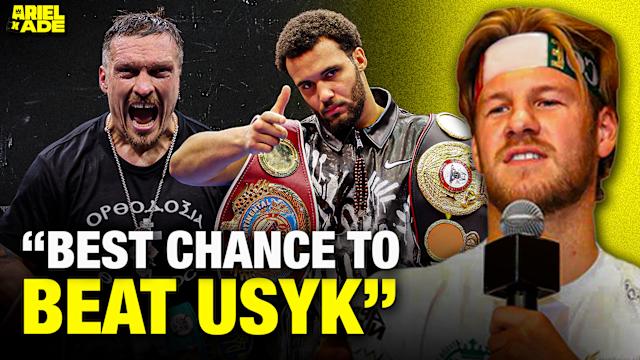
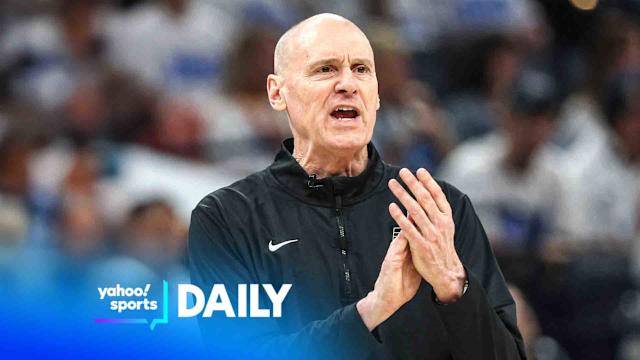

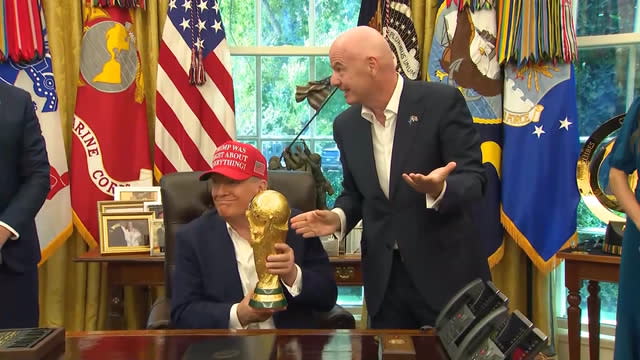

Comments